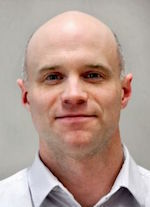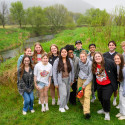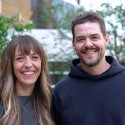Researchers aim to broaden understanding of how toxins affect the body
Even in an era in which there is increased emphasis on living “green,” humans are constantly exposed to a wide range of toxins in everything from our air, food and water to the goods we buy.
And while we know the harmful effects of such substances as phthalates, VOCs, asbestos, lead and others, there are tens of thousands of toxins present in our environment for which that information is yet unknown.
“To date, we do not have a good understanding of how environmental chemicals might influence human tissues,” says William Murphy, the Harvey D. Spangler Professor of Biomedical Engineering in the Department of Orthopedics and Rehabilitation at the University of Wisconsin–Madison.

William Murphy
Murphy is leading a diverse team of UW–Madison researchers who received $6 million from the U.S. Environmental Protection Agency to develop models and screening tools that will rapidly advance knowledge of the health effects of today’s ever-growing assortment of environmental toxins. Awarded through the EPA Science to Achieve Results (STAR) program, the grant will create the Human Models for Analysis of Pathways (H-MAPs) Center at UW–Madison.
With connections to the College of Engineering, the School of Medicine and Public Health, the School of Veterinary Medicine, the Morgridge Institute for Research, and the Wisconsin Institute for Discovery at UW–Madison, the research team includes leading experts in human pluripotent stem cell biology, tissue development and microscale tissue engineering.
“This EPA center is a prime example of the interdisciplinary research excellence at the University of Wisconsin–Madison, as it builds upon our recognized leadership in stem cell biology and bioengineering,” says Marsha Mailick, UW–Madison interim vice chancellor for research and graduate education. “The center promises to fundamentally transform our understanding of how chemicals in the environment can affect human tissues.”
Traditionally, researchers have relied heavily on observing adverse health responses in laboratory animals treated with high doses of toxic compounds.
However, recognizing the need for a paradigm shift that transforms chemical toxicity testing, the UW–Madison researchers will draw on their combined expertise to develop “organotypic” culture models — those that mimic human organs — as well as robust, practical technological tools that allow researchers to rapidly and reliably screen many toxins simultaneously.
“The center promises to fundamentally transform our understanding of how chemicals in the environment can affect human tissues.”
Marsha Mailick
“There’s a big vacuum of information in this field about how chemicals in our environment affect human tissues, and we were motivated by the underserved need,” says Murphy. “The long-term goal is to replace animal models, and use human microscale tissues in a dish to recreate the complex physiology of human tissue.”
Researchers in the H-MAPs Center will focus on toxin screening in the liver, neural and vascular systems, as well as the role of chemicals in breast cancer. They will use a suite of innovative technologies to assemble and use these models in a fast-paced, automated fashion that meets real-world needs.
“Taken together, these innovative technologies are poised to transform organotypic human models from curious scientific concepts into robust, pragmatic tools for next-generation toxicity testing,” says Murphy.
Leaders within the center include:
- James Thomson, director of regenerative biology in the Morgridge Institute for Research, the James Kress Professor of Embryonic Stem Cell Biology, and the John D. MacArthur professor in the School of Medicine and Public Health. He is working on models that represent mature liver tissue.
- Randolph Ashton, an assistant professor of biomedical engineering and a member of the BIONATES theme in the Wisconsin Institute for Discovery. He is developing a screening platform for neural cells.
- David Beebe, the John D. MacArthur Professor and Claude Bernard professor of biomedical engineering and a member of the UW Carbone Cancer Center. He studies chemical contributors to estrogen-receptor-mediated breast cancer.
- Nader Sheibani. a professor of ophthalmology and visual sciences and the RRF/Alice R. McPherson Chair. He is developing vascular networks for toxin screening.
- Sushmita Roy, an assistant professor of biostatistics and medical informatics and a member of the systems biology theme at WID. She is working to understand human tissue assembly and the tissues’ responses to chemicals.
Other collaborators on the grant include Brian McIntosh, an assistant automation scientist in the Morgridge Institute; Ron Stewart, associate director of bioinformatics in MIR; Krishanu Saha, an assistant professor of biomedical engineering and a member of the BIONATES theme in WID; Kyung Sung, an assistant scientist in biomedical engineering; Linda Schuler, a professor in the School of Veterinary Medicine; Christine M. Sorenson, a senior scientist in pediatrics; and Mohammad Ali Saghiri, a research associate in ophthalmology and visual sciences.
Tags: environment, grants, health & medicine, research




